This week I visited the PGRO’s main trial site near Newark, at Stubton, part of Dyson Farms. I was there primarily to talk through the assessments they conduct as part of the Descriptive List work for pulses (their equivalent to the AHDB Recommended List for cereals). The reason for this is to help create the protocols for the assessments that will be carried out on the bean variety trials under “LiveBean”, our new initiative to help better understand organic bean agronomy, improve varietal recommendations, and hopefully expand the bean acreage to meet ever increasing market demand.
We have helped effectively develop protocols for wheat and oats through our variety trials work that have enabled simplified, farmer assessments to capture the essential dataset for varietal evaluation. For beans, we’re still lacking this knowledge and so need to start from a more complex, in-depth assessment strategy to be able to eventually simplify this once we know what the key timings and important traits to assess are. We need to be guided as much by our own experience as by the experts in pulse agronomy, because as is typical, the traits important for organic do not always align with non-organic systems. For instance, the PGRO show no interest in early crop vigour when I would argue it might be the most important crop trait for organic farming. They tend to focus assessments on later development stages and look only at crop numbers at emergence before they assess the crop at flowering for pest damage and diseases.
As well as their descriptive list work they’re also exploring management practices like bicropping with cereals, seed rates and spring beans planted in the Winter. On top of the levy funded work there are numerous “private” trials run for breeders and some by ag chem companies looking at fertiliser and pesticide efficacy.
Below are various photos from the PGRO trials.....
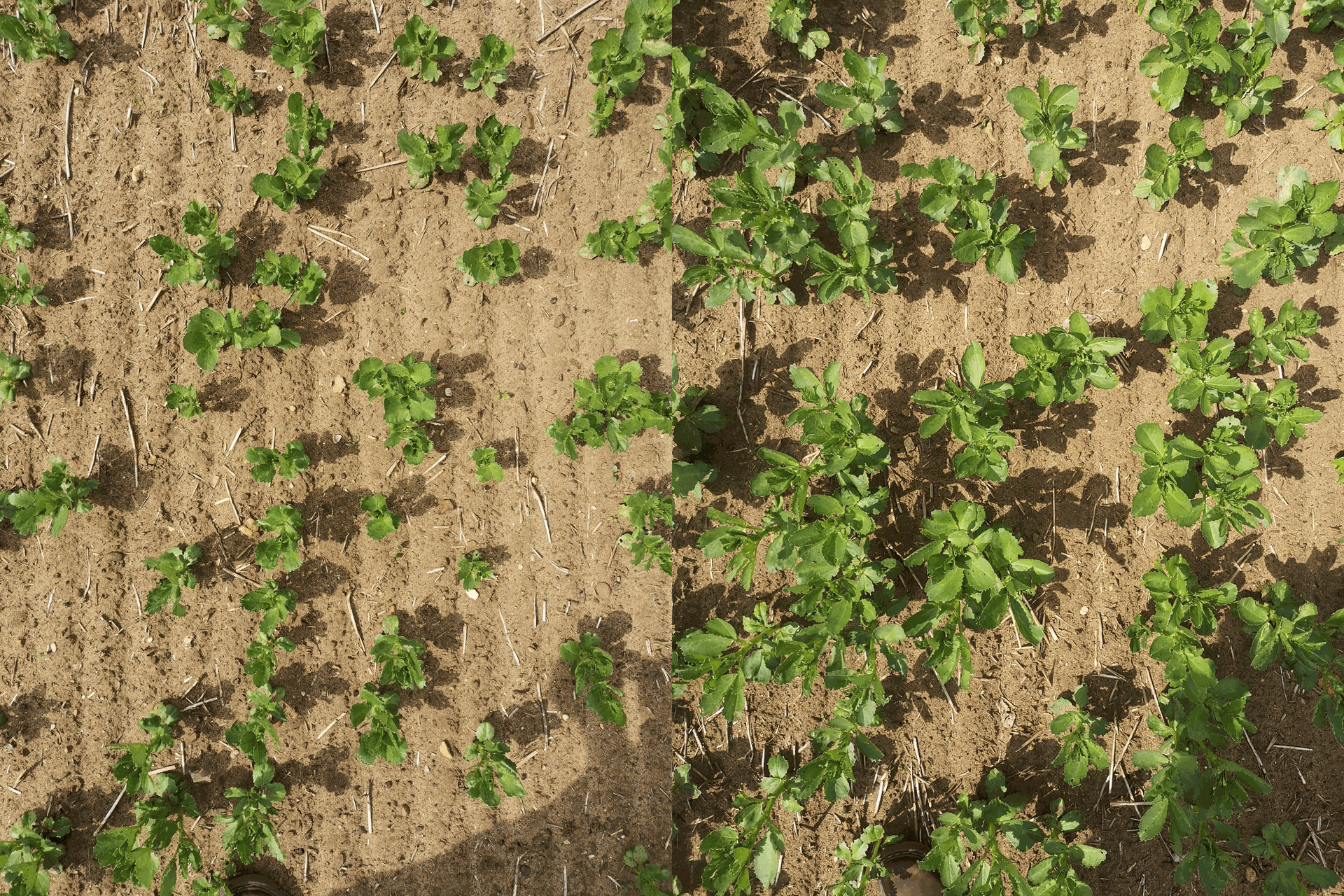
Differences in early ground cover between two different spring bean varieties. It can make all the difference in terms of weed competition
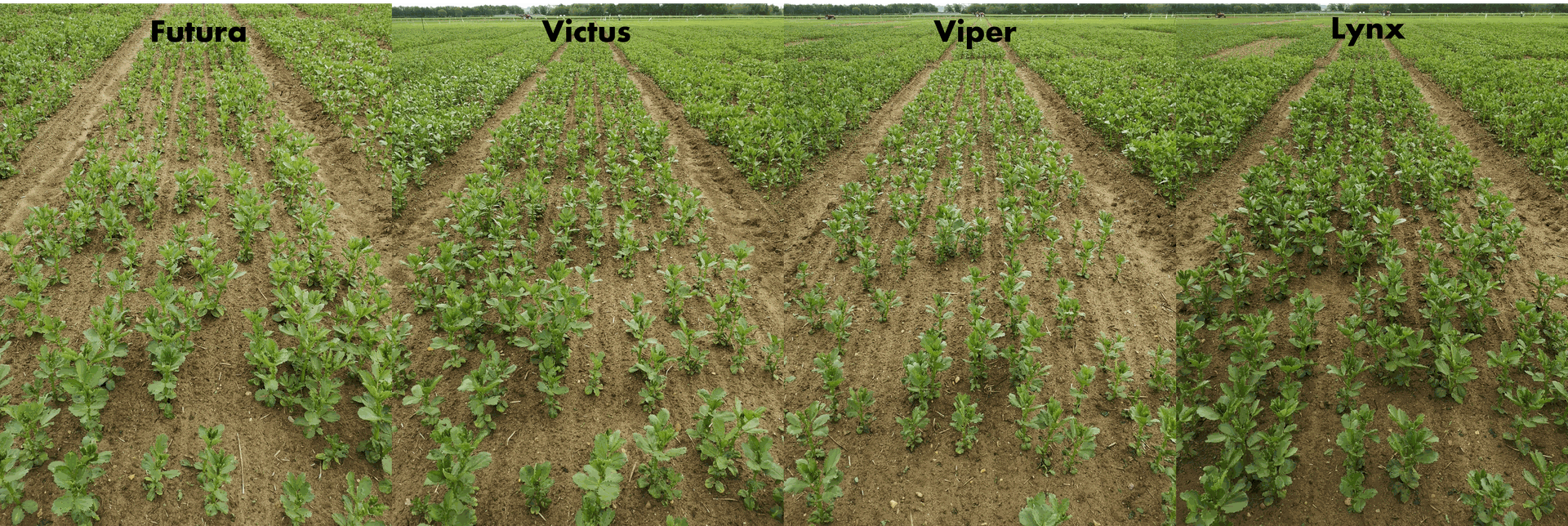
Photo showing the four spring LiveBean cultivars. Lynx looks to have the edge in terms of vigour at this stage.
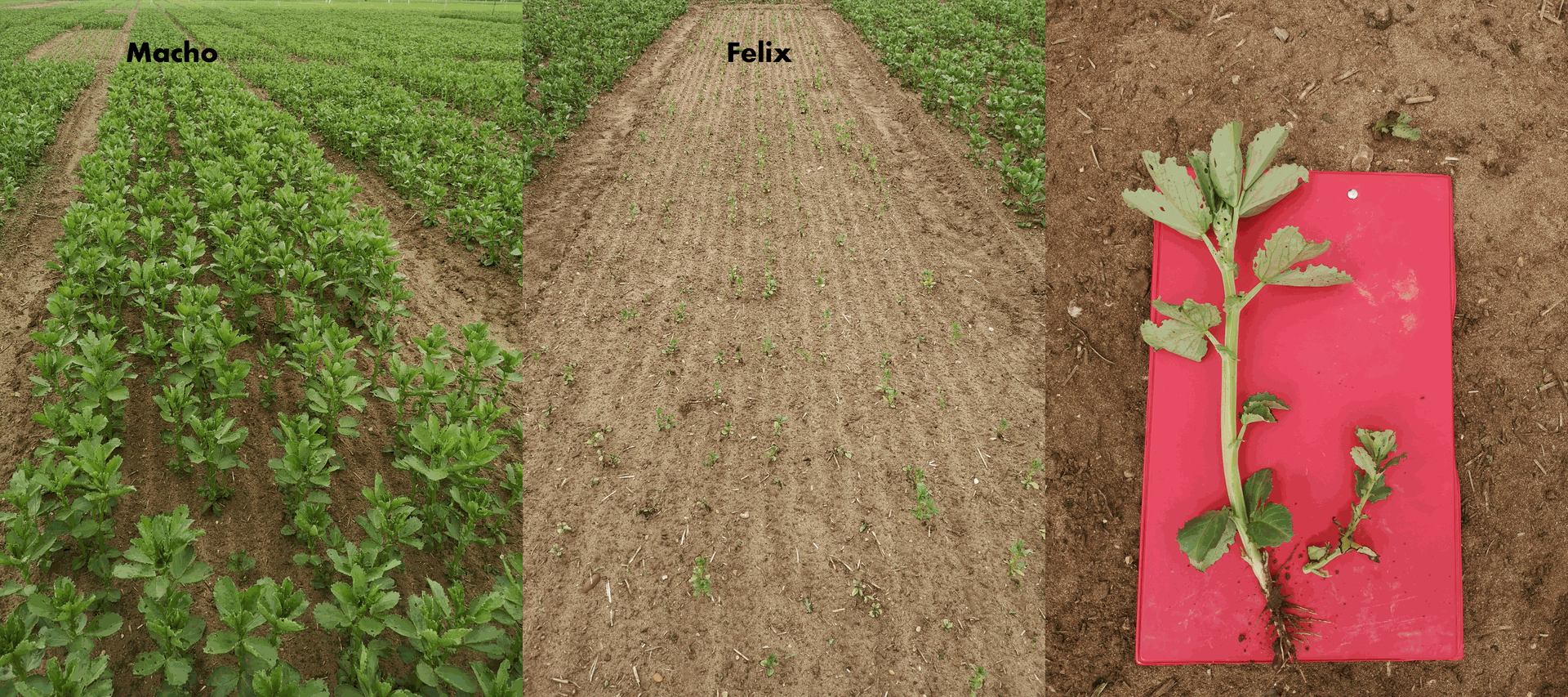
This photo illustrates perfectly the link between seed size and early vigour and biomass, showing the variety with the largest and smallest bean seed. Macho looks like a variety that would be worth testing in our spring bean variety trials.
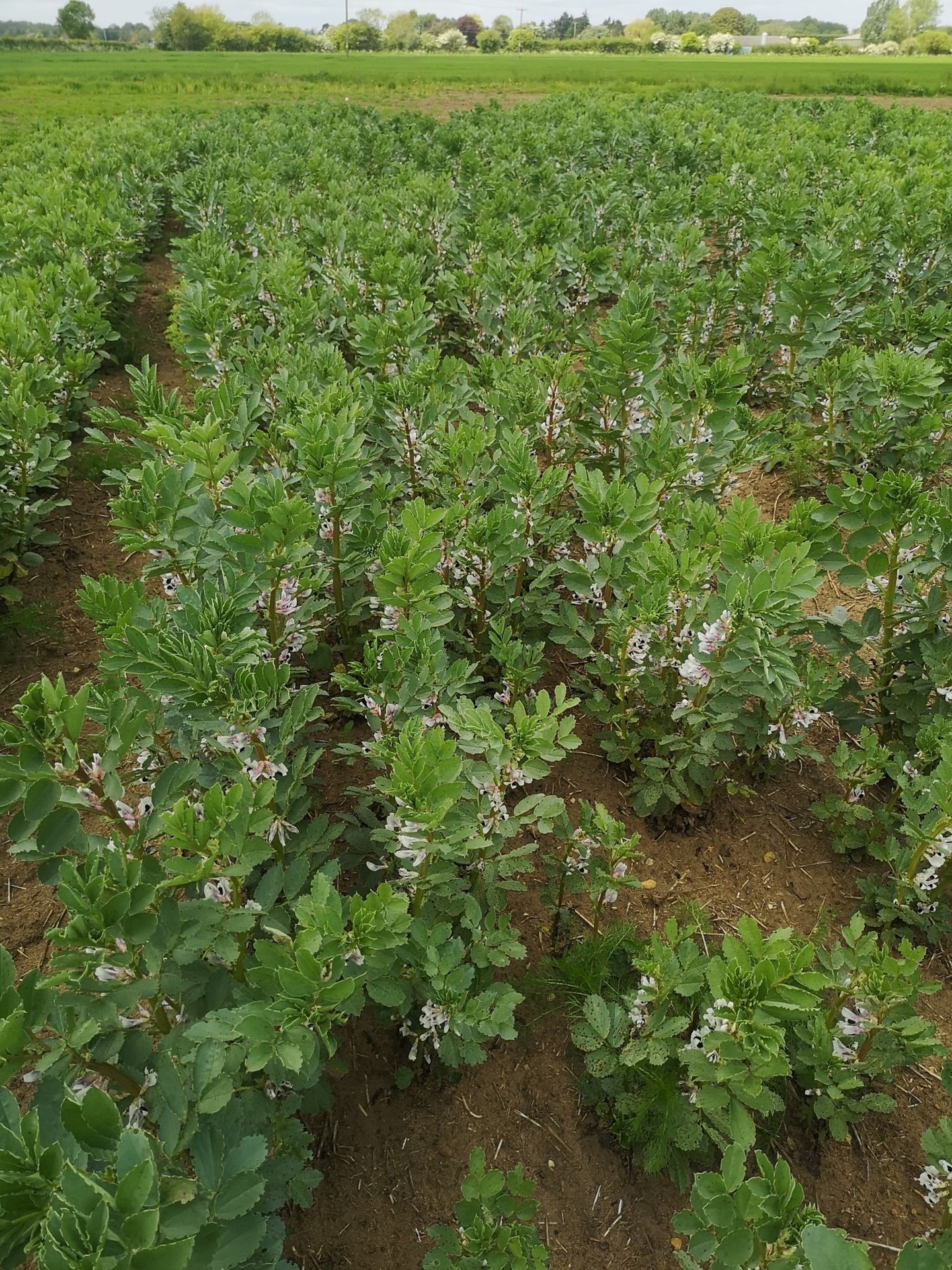
The PGRO are looking at sowing Spring beans in the Autumn. The photo shows the cultivar Lynx, drilled mid-November.
The PGRO’s main focus is on field beans, combinable peas and vining peas but they also had trials on lentils, and even more interestingly, on chickpeas, as they explore pulse crop diversification. Interestingly lentils were once cultivated in Britain showing up on the archaeological record in southern England from Roman times to the early Middle Ages, so a reintroduction, particularly since the crop itself provides such a healthy source of protein, makes a lot of sense. The company Hodmedods now grows a commercial crop across several farms, Organic and non-organic.
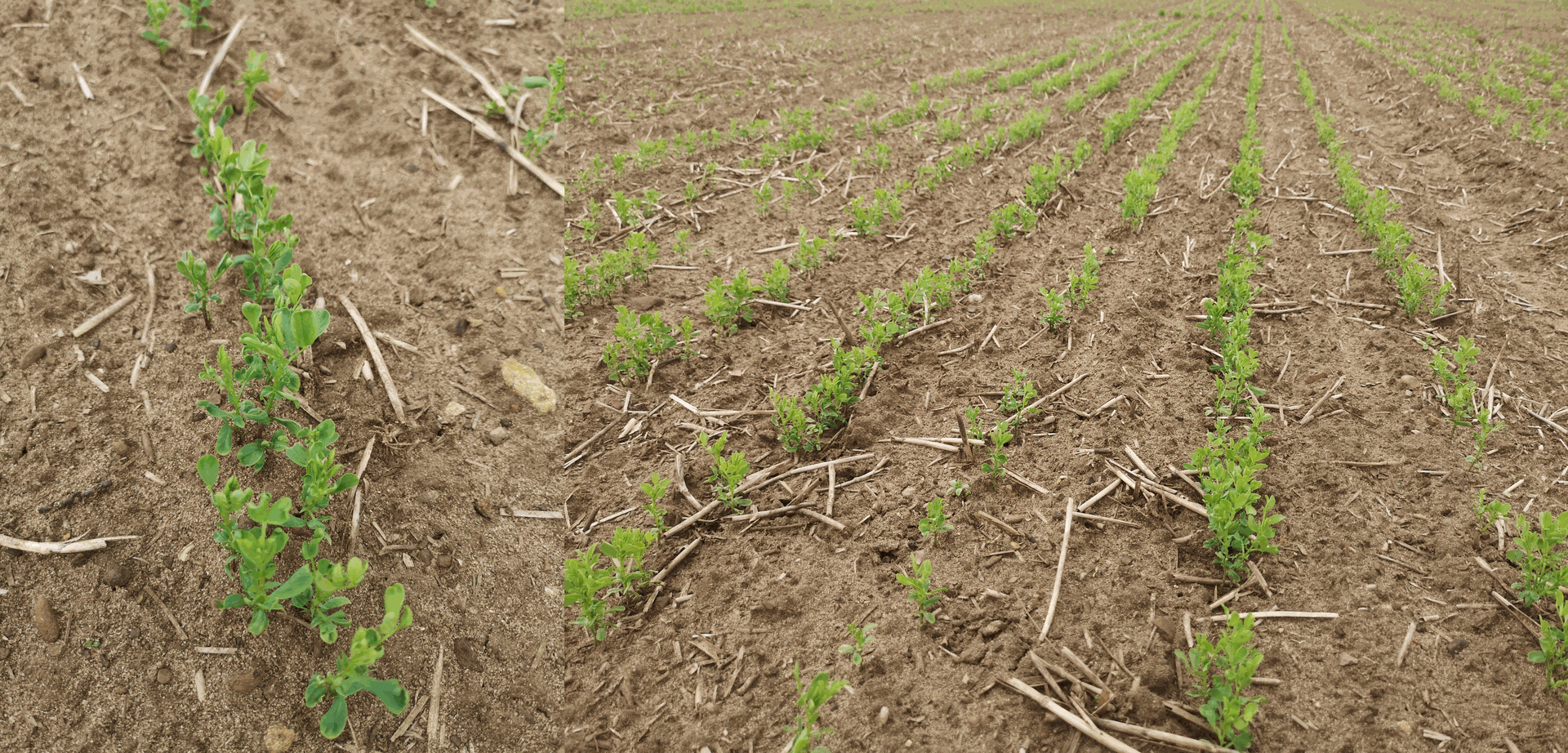
Lentils trials looking at varieties, seed dressings and bicropping.
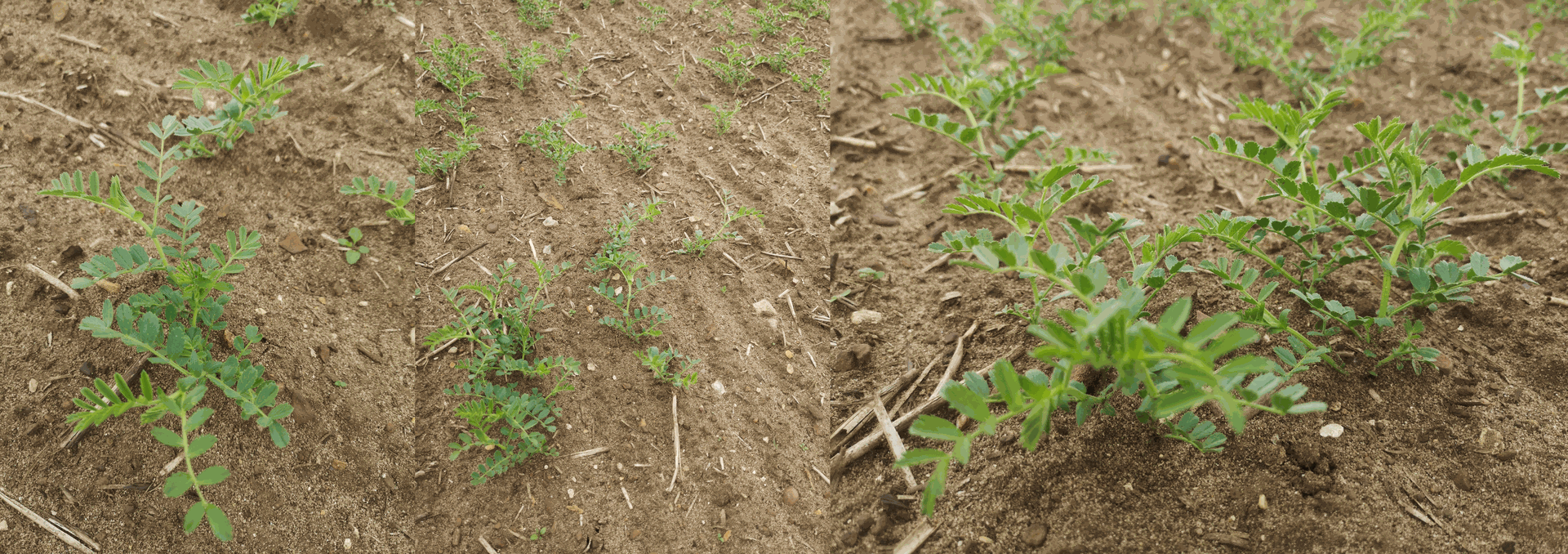
Chickpea trials at PGRO
The PGRO will be hosting an open day at their main trial site on 27th June for a chance to see all their latest research. Visit the PGRO events page for more details of their Open Day.